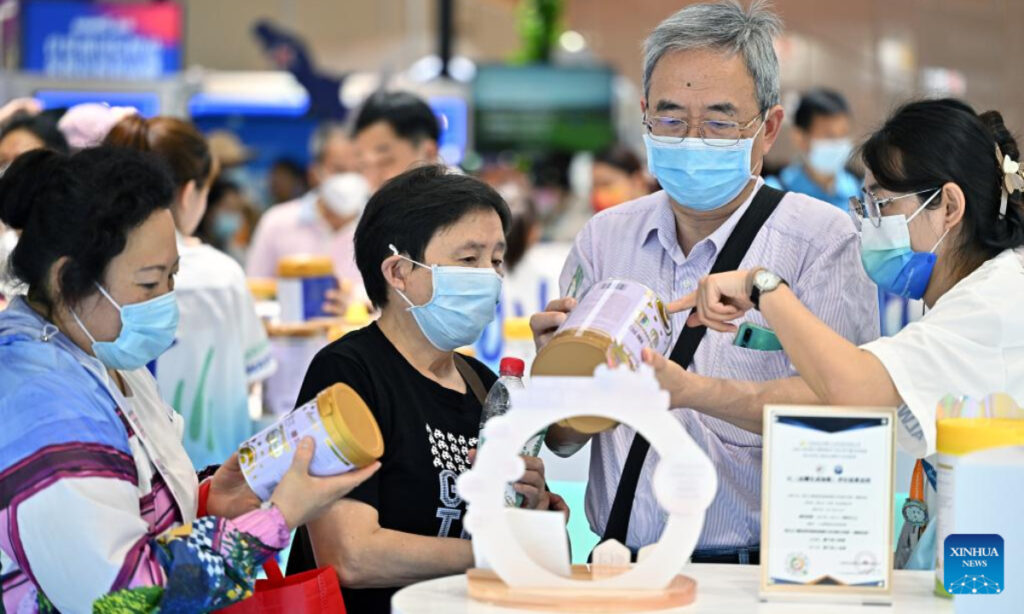Chinese authorities on Monday issued 20 measures to boost domestic consumption, including support for expanding real estate and auto sales, underscoring the country’s intensifying efforts to ensure steady economic recovery and meet annual economic development goals amid internal and external downward pressures.
Also on Monday, the State Council, China’s cabinet, held an executive meeting that stressed strengthening the study of counter-cyclical adjustment and policy reserves, and the introduction of new policy measures to better reflect the pertinence, combination and synergy of macro policies. It also called for efforts to stimulate the vitality of private investment and accelerate the cultivation and growth of strategic emerging industries.
The measures from the National Development and Reform Commission (NDRC), China’s top economic planning agency, represent swift policy action following a recent top tone-setting meeting that stressed efforts to stabilize growth, analysts said. The supportive measures are crucial to improving market expectations and lifting domestic demand, and will, along with a slew of measures in other areas such as boosting the private economy, ensure steady economic recovery in the second half of 2023, analysts noted.
An important focus of the 20 measures released on Monday is stabilizing consumption of big-ticket items such as houses and cars. In terms of houses, the NDRC reiterated support for those buying their first homes and those seeking to upgrade their living standards. Specifically, the NDRC vowed to improve the basic mechanisms and support policies for housing security, expand the supply of affordable rental housing, and focus on addressing the housing problems of new urban residents, young people and other groups with housing difficulties.
The NDRC’s measure for the housing industry came as other Chinese authorities and local governments have in recent days issued various measures to boost the real estate market, which is a major driver of domestic consumption, but has come under pressure.
The State Council executive meeting on Monday also called for efforts to adjust and optimize real estate policies, and introduce policies and measures that are conducive to the stable and healthy development of the real estate market according to different needs and cities.
At a recent symposium with property developers, Ni Hong, minister of housing and urban-rural development, called for the full implementation of favorable measures, including lower down payment requirements and mortgage rates for first-time homebuyers, tax breaks for upgrading and treating buyers who have paid off prior mortgages as first-time purchasers.
Another key driver of domestic consumption is auto sales, which account for about 10 percent of total consumption. The NDRC on Monday said all regions are barred from imposing new restrictive measures on car purchases, and places that already have restrictions in place should optimize car purchase restrictions according to their local conditions. Also, efforts should be made to fully implement policies aimed at removing restrictions on sales of second-hand cars. More policy support will also be put in place to boost sales of new-energy vehicles (NEVs).
Auto sales have become a highlight of consumption recovery in China. In the first half of 2023, auto sales in China increased by 9.8 percent year-on-year to about 13.24 million units, according to official data. Most notably, sales of NEVs in the first half of the year surged 44.1 percent year-on-year to 37.47 million units.
Apart from home and car sales, the NDRC measures on Monday also covered a wide range of areas, including expanding services consumption and rural consumption, promoting new models of consumption, and improving consumption infrastructure. Also drawing widespread attention on Monday is the NDRC’s call for full implementation of the paid leave system, off-peak leave and flexible work and rest, in order to boost cultural and tourism consumption.
Key to steady recovery
“Promoting consumption is the key to the current recovery and expansion of demand. It’s about better meeting people’s expectations and yearning for a better life, and it is also very important to laying a solid foundation for economic recovery,” Li Chunlin, vice chairman of the NDRC, said at a press conference on the 20 measures on Monday.
Asked about how to better improve consumers’ pessimistic sentiment, Li said that consumers’ willingness to spend improved in the first half of the year, pointing to an 8.2-percent year-on-year growth rate in total retail sales, which hit 22.75 trillion yuan. “What I want to express… is that the Chinese economy has strong resilience and vitality, and the ship of the Chinese economy will definitely be able to cut through the waves and sail steadily and far,” Li said.
Analysts also said that the 20 measures are very timely, as the country’s economy continues on a recovery trend but faces challenges from both at home and abroad.
“The 20 measures are a crucial part of the slew of measures aimed at promoting consumption and expanding domestic demand,” Li Chang’an, a professor at the University of International Business and Economics in Beijing, told the Global Times on Monday, noting that the measures are very specific and targeted, focusing on areas that are significant for promoting consumption, such as home and auto sales.
Li said that more detailed measures could follow, especially measures from finance and monetary authorities, which will further expand the effect of the measures on Monday in boosting consumption.
As China eyes steady economic recovery in the second half of the year, many ministries have issued various measures to boost consumption and other major growth drivers. The measures on Monday came just days after the Political Bureau of the Communist Party of China Central Committee held a meeting to analyze the current economic situation and make arrangements for the economic work in the second half of the year. The meeting noted that the Chinese economy is facing new difficulties and challenges, which mainly stem from insufficient domestic demand and other difficulties and risks.
Following that tone-setting meeting, many ministries and local governments have moved swiftly to announce measures to tackle those challenges and ensure stable economic recovery.
“Mainly due to the impact of [negative] expectations, there have been some fluctuations during the period of the country’s economic recovery,” Cong Yi, dean of the School of Marxism at the Tianjin University of Finance and Economics, told the Global Times on Monday. “In terms of policy formulation, we need to seize the opportunities brought about by structural changes, provide high-quality services and products to meet multi-level and diversified consumer demand, and further release the impetus for economic recovery.”
Going forward, analysts expect more policy measures to be announced to further boost consumption, investment, foreign trade, and other economic growth drivers in China, as the world’s second-largest economy is aiming for a growth rate of about 5 percent in 2023, a massive goal that would once again make China the bright spot of the global economy amid persistent downward pressure on world growth.
(Global Times)




